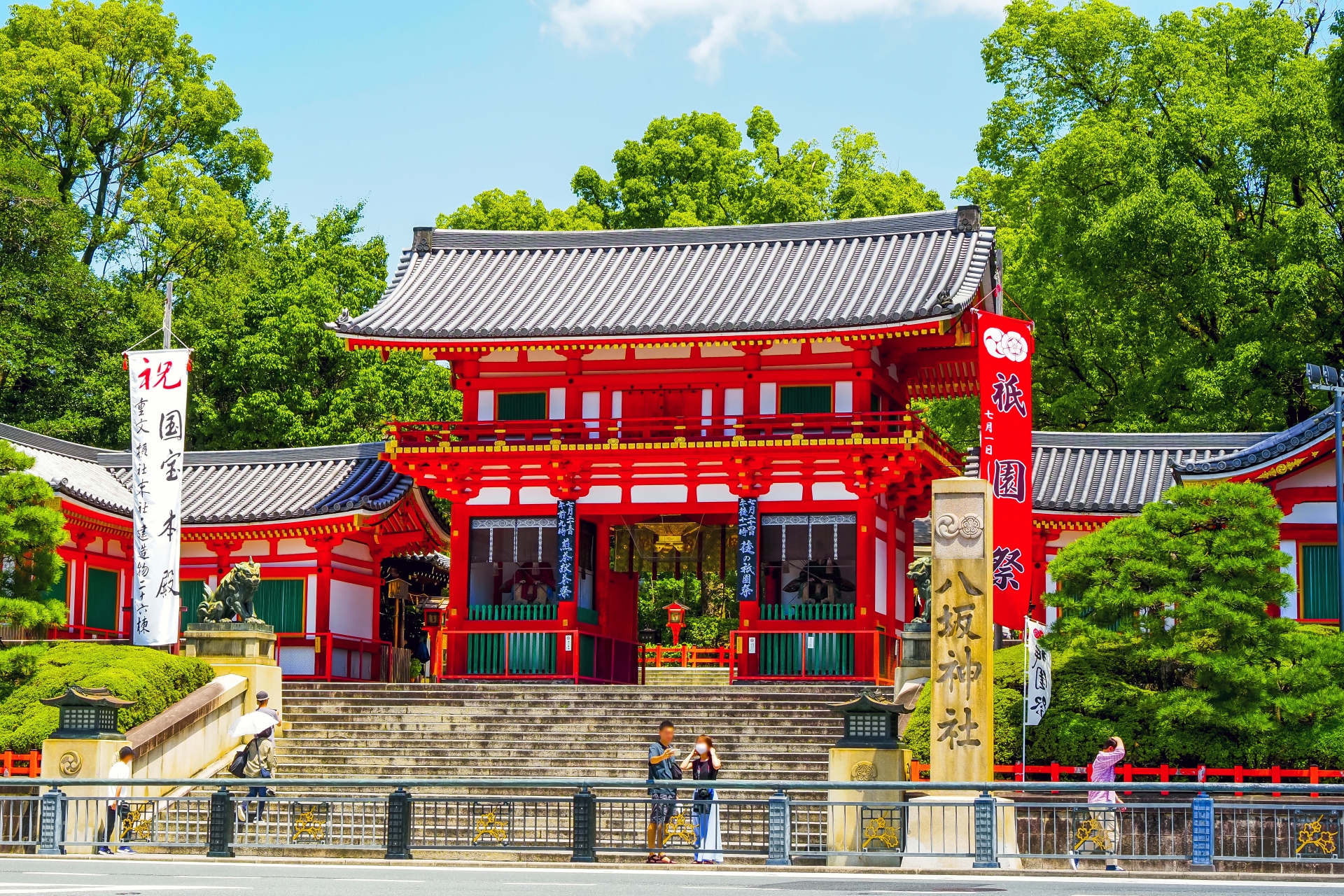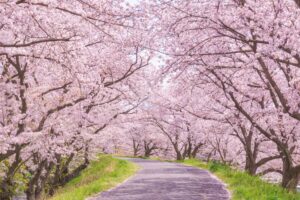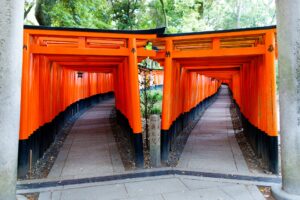Yasaka Shrine, nestled in Kyoto’s Gion district, stands as a timeless cultural icon. Renowned for its pivotal role in the annual Gion Matsuri festival and its serene ambiance amidst the bustling city, this historic shrine is a testament to Kyoto’s rich traditions. With vibrant history, striking architecture, and seasonal beauty, it beckons travelers and cultural enthusiasts alike.
History and Significance of Yasaka Shrine
Founding and Historical Relevance
Established over 1,350 years ago, Yasaka Shrine—originally known as Gion Shrine—carries profound historical weight. As a Shinto shrine dedicated to Susanoo-no-Mikoto, the deity of storms and seas, it was built to protect against plagues and misfortune. Its historical role in safeguarding Kyoto during tumultuous times solidifies its cultural prominence.
Architectural Marvels
Key features include the Romon Gate, an imposing two-storied entrance, and the Honden (main hall), a splendid example of traditional Shinto architecture. The shrine’s iconic lantern-lit corridors at night evoke mystical charm, making it a photographer’s dream.
Symbolism in Kyoto’s Heritage
Beyond its architectural beauty, Yasaka Shrine plays a vital role in preserving Kyoto’s intangible cultural heritage. Its status as the epicenter of the Gion Matsuri aligns it with Kyoto’s historical narrative, blending religion with community.
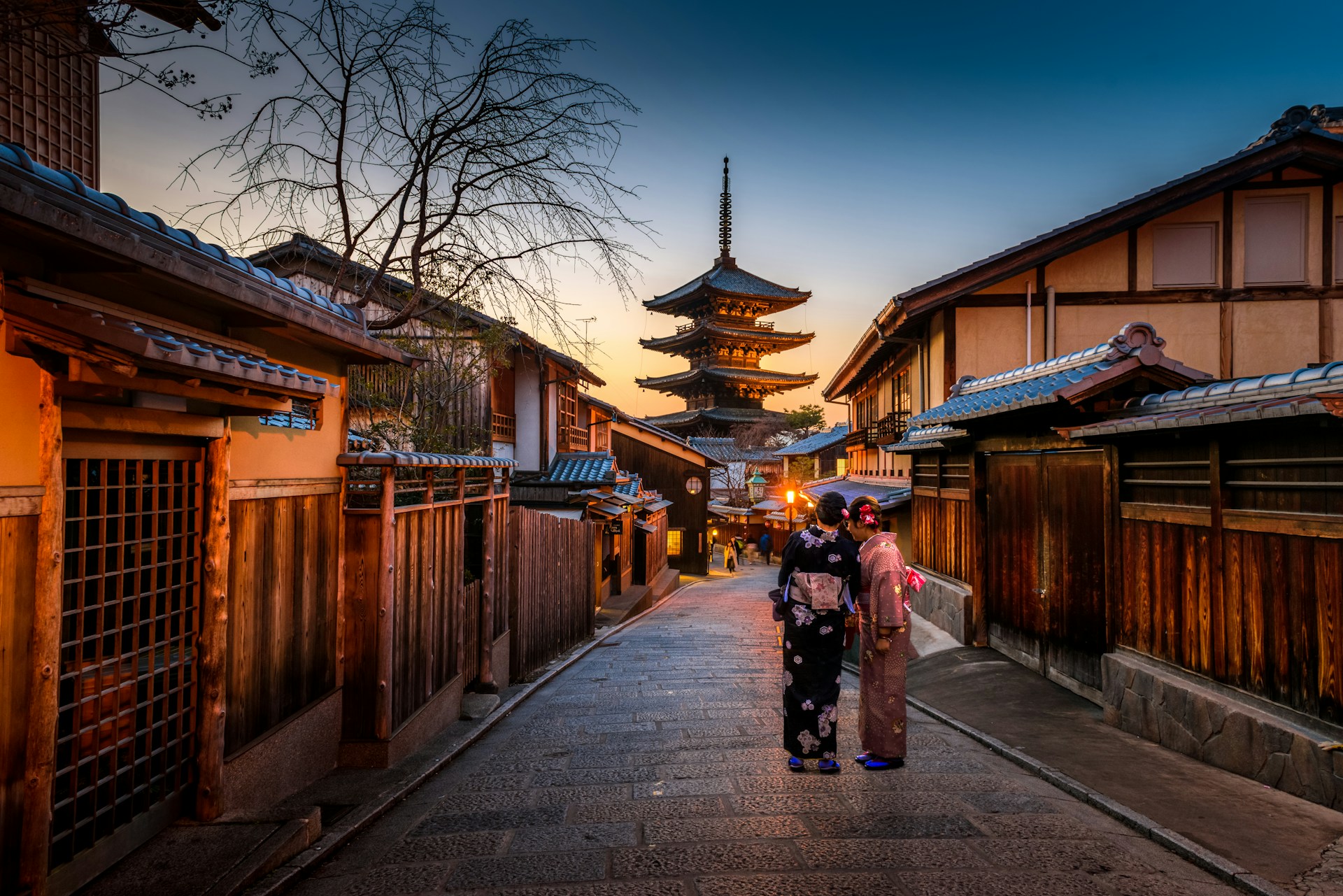
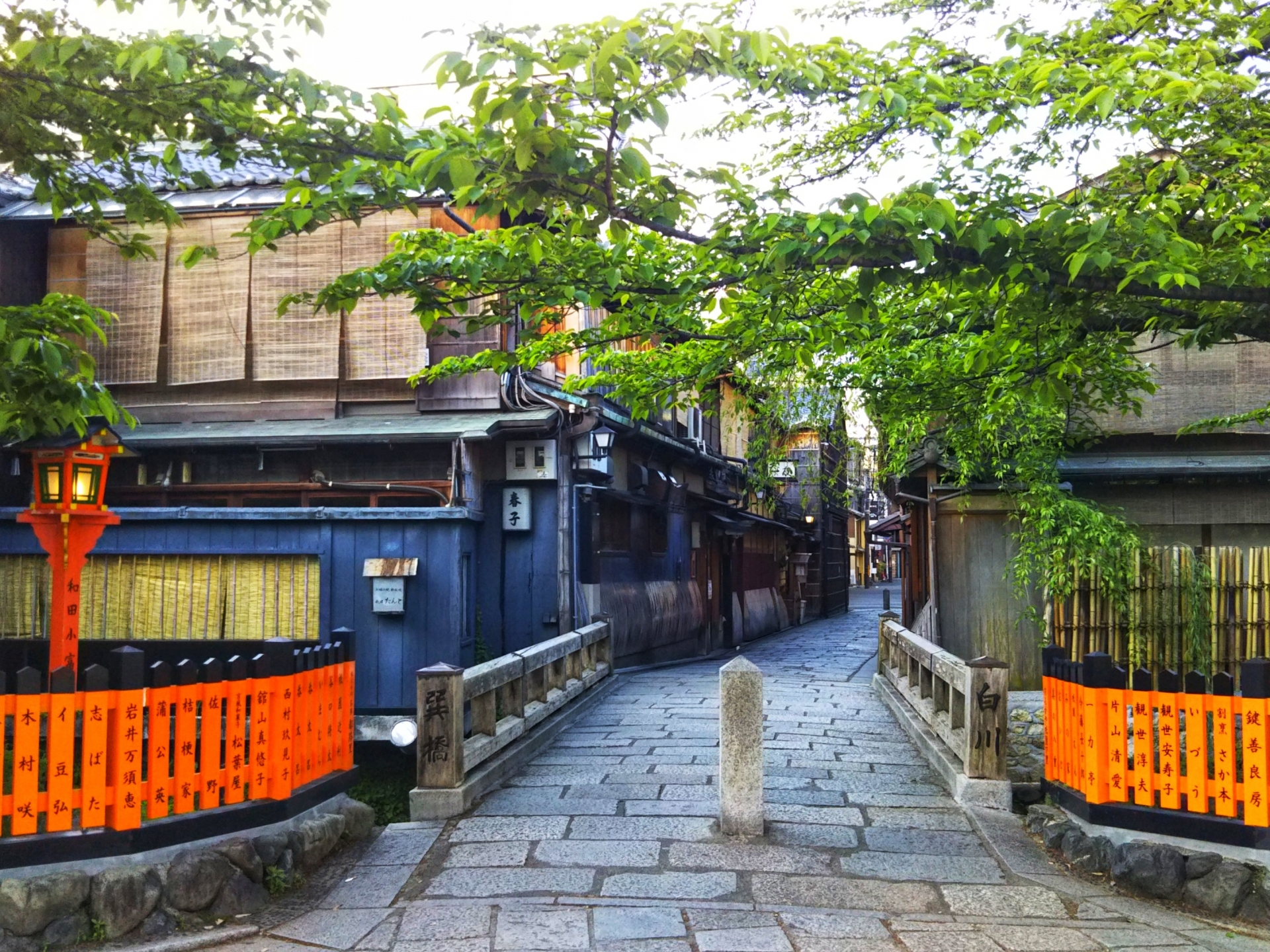
Events and Festivals at Yasaka Shrine
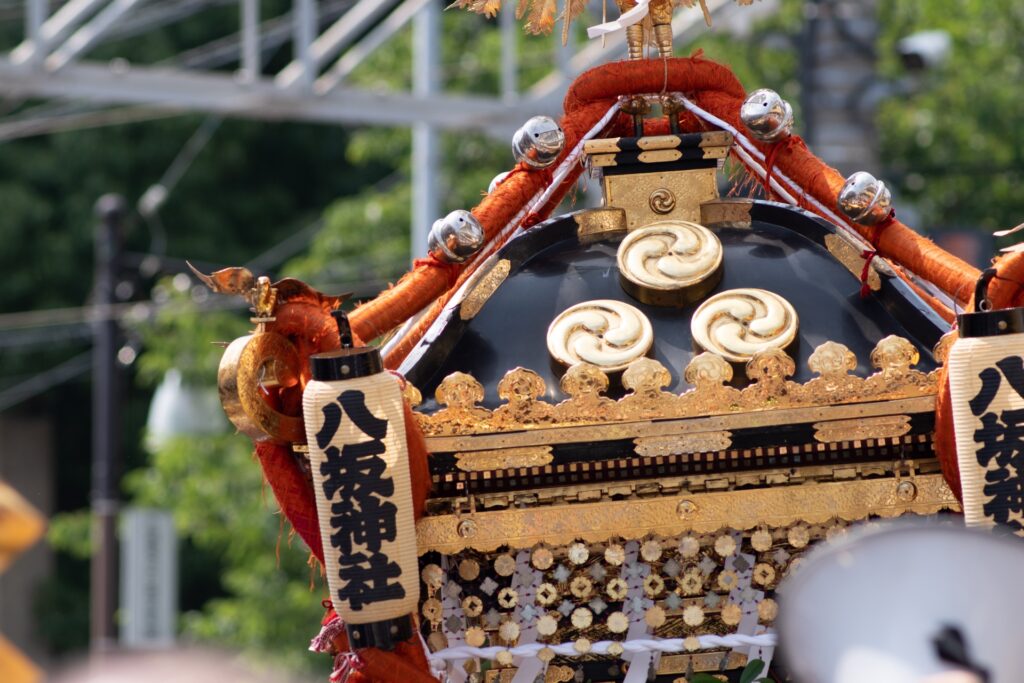
Gion Matsuri: A Grand Tradition
Gion Matsuri, celebrated annually in July, is one of Japan’s most famous festivals. This month-long event features grand parades with intricately designed floats (yamaboko), traditional music, and vibrant street markets. The shrine serves as the spiritual hub of the festival, blessing participants and floats.
Other Celebrations
Notable events include the Setsubun Festival in February, where participants throw beans to ward off evil, and the New Year’s celebrations when thousands flock to Yasaka Shrine to pray for good fortune. Each event reflects Kyoto’s deep-rooted Shinto customs.
Visitor Tips
Arrive early for prime spots during festival days, and wear comfortable shoes as you’ll walk extensively. Booking accommodations near Gion months ahead is recommended.
Exploring Yasaka Shrine’s Surroundings
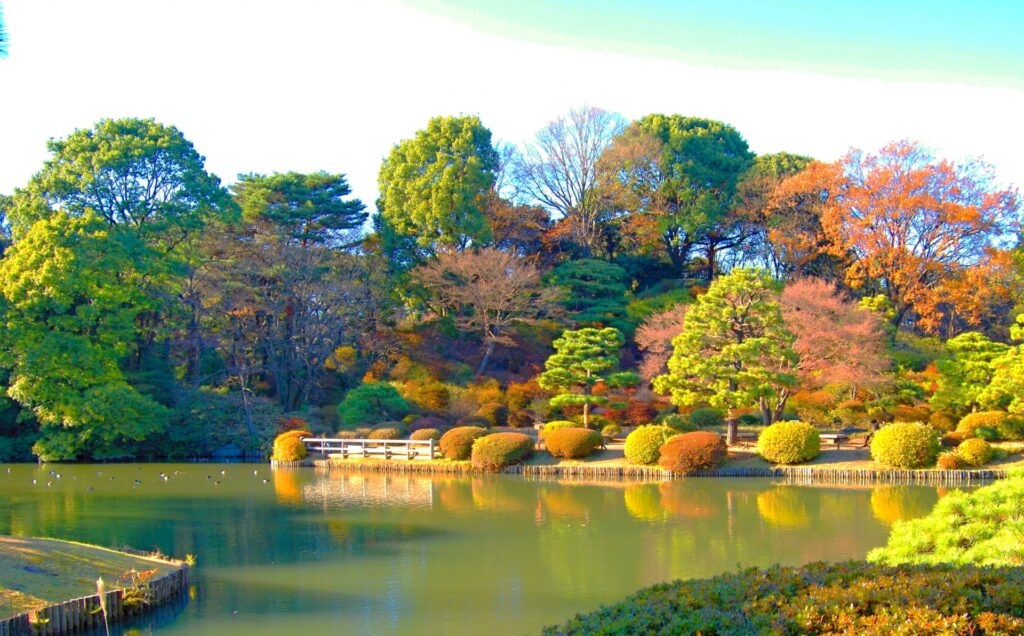
Nearby Attractions
- Maruyama Park: Adjacent to the shrine, this park is a favorite for cherry blossom viewing in spring.
- Gion District: Famous for geisha culture, explore its cobblestone streets, traditional tea houses, and charming boutiques.
Suggested Itinerary
Start with a morning visit to Yasaka Shrine, stroll through Maruyama Park, and wrap up with dinner in the Gion District for a perfect blend of history and modern Kyoto.
Best Times to Visit Yasaka Shrine
Seasonal Highlights
- Spring: Witness cherry blossoms enveloping the shrine and Maruyama Park in ethereal beauty.
- Autumn: The fiery hues of maple trees create a breathtaking backdrop.
- Evening Visits: Illuminated lanterns offer a tranquil and magical experience year-round.
Crowd Management Tips
Weekday mornings are ideal for peaceful visits. Avoid peak times during festivals unless you’re there to participate.
Cultural Etiquette and Tips for Visitors
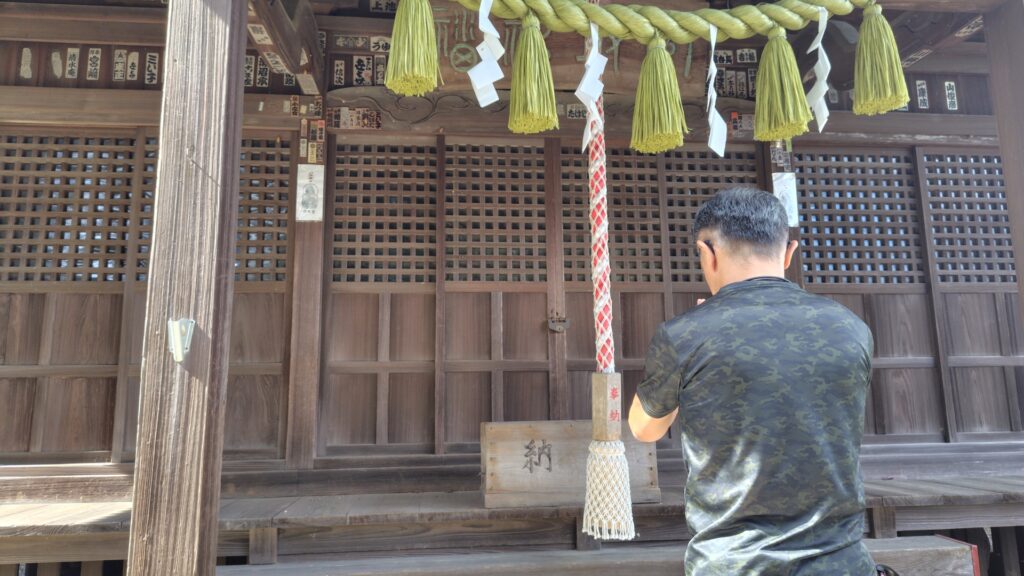
Dos and Don’ts
- Respectful Behavior: Bow when entering and exiting, and refrain from loud conversations.
- Offerings: Participate in the purification ritual by washing your hands and mouth at the chozuya (water pavilion).
- Photography: Capture beauty without disrupting rituals or invading privacy.
Practical Tips
Bring small change for donations, dress modestly, and consult maps to navigate the shrine’s vast grounds efficiently.
Conclusion
Yasaka Shrine embodies the harmony of history, spirituality, and cultural richness. From its architectural splendor and festive spirit to its serene surroundings, it promises an unforgettable Kyoto experience. Whether a history buff, a festival enthusiast, or a casual traveler, Yasaka Shrine is a must-visit destination, offering timeless memories.

